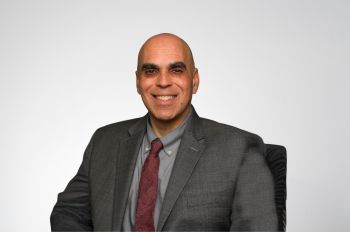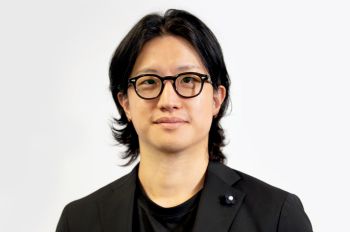Twelve Undergraduates Participating in the Spring 2018 Armour R&D Program
Armour College of Engineering undergraduate students and their faculty mentors have been awarded Spring 2018 Armour R&D Fellowships. The program, an Armour College of Engineering Distinctive Education initiative, offers undergraduate engineering students the opportunity to gain hands-on research and development experience in the lab of a faculty mentor.
Nine students funded during the spring term will begin projects for the first time, while three participants will build on research they started during prior semesters. Students have been selected to participate in the program based on the quality of project proposals submitted. The proposals are reviewed and selected by Natacha DePaola, Ph.D., Carol and Ed Kaplan Armour College Dean of Engineering, and the Distinctive Education Council.
Armour R&D will run for ten weeks, culminating with the 4th Annual Armour R&D Expo, which will be held on April 5, 2018, in the John T. Rettaliata Engineering Center Atrium. During the Expo, students will participate in a poster competition, sharing the results of their work and competing for awards with participants from the summer and fall 2017 semesters.
The Spring 2018 Armour R&D projects are categorized under the four IIT Engineering Themes: Water, Health, Energy, and Security. These themes represent areas in which engineers can create solutions of global impact that advance society.
HEALTH
Nikanth Patel (BME, 5th Year) and Keigo Kawaji, Assistant Professor of Biomedical Engineering, will work on their MIND project, Extending Clinical Heart Tissue Scoring by Magnetic Resonance Imaging. The project will focus on the design and delivery of a clinical tool that will allow collaborating physicians, who regularly read diagnostic MRI images, to make improved quantitative assessments in specifically motion-compromised MRI scans that were previously considered unsalvageable. Patel will be specifically working on T1 mapping and trying to minimize the erroneous values in order to get an accurate color map for the MRI scan.
Asma Shuaibi (BME, 2nd Year) and Keigo Kawaji, Assistant Professor of Biomedical Engineering, will work on the project, New Heart Tissue Biomarker Validation with Magnetic Resonance Imaging. This project concerns the development of a tissue-engineered heart implant that can potentially restore normal cardiac function in the clinical setting. Shuaibi will learn how to collect information and scientific findings in an effort to improve her academic writing. She will learn MATLAB, the programming language, and utilize it in measurements and calculations pertaining to this experiment. In further weeks, Shuaibi will interact with physicians and discuss the impact of their findings.
Demetria Boatwright (ArchE, 4th Year) and Mehdi Modares, Associate Professor of Civil and Architectural Engineering and Director of Structural Engineering, will begin work on their project, An Investigation on Sampling and Testing Methodologies for the Mechanical and Fracture Properties of Human Bone. Fatigue fractures caused by repetitive activities are a common health risk for athletes and military recruits. Current studies that focus on bone fatigue are limited by a lack of standardized sampling and testing procedures for determining the mechanical and fracture properties of human bone subjected to cyclic loading. This renders data from different studies incompatible. Research under this project will focus on the methods used in current studies which analyze fatigue fracture in bone with the goal of developing a framework for fatigue analysis of human bone. Future applications include the development of metrics to evaluate a patient’s risk for fatigue fracture.
Emmalee Ciriacks (BME, 2nd Year) and Georgia Papavasiliou, Associate Professor of Biomedical Engineering, will continue work on the project, Fluorescence Microscopy and Immunohistochemistry to Discover Vessel density and Maturation in Gel Implants. Last semester, Ciriacks assisted with an animal trial that tested different peptides with the purpose of stimulating vessel growth on the back muscle of a rat up into a gel implant. She learned how to form the gels and create the top hat-like containers that held the gel onto the muscle. The gels have been preserved and now must be analyzed. This semester Ciriacks will stain the various cell types to determine if vessels have formed in the gel. If vasculature is present, further analysis will be done to see if these vessels were stable and functional. This research has the potential to spark a new line of treatment for people who are approaching the amputation of a limb. If blood flow cannot be restored through surgical means, no other options are currently available for a patient.
Kristin Wills (BME, 3rd year) and Assistant Professor of Biomedical Engineering, Kenneth Tichauer, will continue work on the project, Quantitatively Assessing Retinal Blood Flow Using Videoangiography. The overall project is focused on finding a quantitative measurement that is associated with diabetic retinopathy, a type of vision defect that can occur in people with diabetes mellitus. The project is working to measure blood flow within the eye and determine differences between healthy people and people with diabetes to create a way to diagnose the disease early. Wills will be using MATLAB to analyze the images of both human and rat eyes to find these differences. This project can be used to help with early detection and intervention of diabetic retinopathy.
Chandrika Haldar (BME, 1st Year) and Kenneth Tichauer, Assistant Professor of Biomedical Engineering, will start work on the project, Drug Receptor Occupancy Models Using Paired Agent Imaging Presently, the efficacy of a drug is measured by the amount of drug in the cancerous cells. However, through paired agent kinetic models Haldar hopes to find a way of quantifying the "drug receptor occupancy". Future application of this development will be in cancer treatment - the response of a particular drug hopefully be predicted with more accuracy that simple drug delivery methods. Haldar’s part in the project is to explore and test the modified version of Dr. Tichauer's paired agent kinetic model.
ENERGY
Erik Colin (CPE, 3rd year) and Ian Brown, Assistant Professor of Electrical and Computer Engineering, will start work on their MIND project, Scalable Multilevel Multi-cell Power Architectures Leveraging Cost Effective GaN Power IC Technology. The overall goal of the project is to leverage the decreasing cost of enhancement mode GaN-on-Si power semiconductor devices. The project plans to create fault tolerant multicell multilevel power converters, which can utilize the low voltage GaN-on-Si devices but scale to higher input and output voltages. Colin’s role in the project will be to leverage my computer engineering background to assist in the development of digital signal processor (DSP) embedded software for the control of the multilevel inverter power electronic circuits.
Vincente Chapa (ME, 4th Year) and Carrie Hall, Assistant Professor of Mechanical, Materials and Aerospace Engineering, will start on the project, The Future of FuelFlex Diesel Engine. They will be conducting research to design a way to incorporate alternative fuels into a diesel engine that is currently located in the powertrains lab. This will be done by first modeling the combustion of different fuels using simulation software, then by modeling how to incorporate this system in the engine that is currently set up in the lab. Their goal is to first find which fuel will work best, then incorporate this fuel to work simultaneous with diesel fuel.
Koushik Neogi (ME, 1st Year) and Mahesh Krishnamurthy, Associate Professor of Electrical and Computer Engineering, will work on the MIND project, Efficient Replacement of the Linear Induction Motor. The devised system is supposed to replace the current linear induction motor, as it is much more efficient. Ideally it is supposed to be used for hyperloop however it can be modified to propel other objects in linear motion. Neogi’s contribution to the research is to analyze the Eddy current patterns and see if these inefficiencies of the linear induction motor are removed.
Bijun Chen (EE, 4th Year) and John Shen, Grainger Professor of Electrical and Computer Engineering, will start work on their project, Parasitic Inductances Extraction of Wide Bandgap Power Semiconductor Devices. The project is about discussing a new technique to accurately characterize parasitic inductances of discrete fast switching MOSFETs based on S-parameters measurement using two-port vector network analyzer. By comparing with one-port technique, the new two-port technique offers the advantages of improved accuracy. It can be applied to discrete devices and power modules. Chen’s contribution is to test different devices with the two-port techniques and perform case studies on commercially available wide bandgap power devices.
SECURITY
Blake Hageman (ArchE, 3rd Year) and Mehdi Modares, Associate Professor of Civil and Architectural Engineering and Director of Structural Engineering, will begin work on their project, Investigation of Fire Evacuation Modeling and Egress Optimization for High-rise Buildings. The ultimate goal of this research is to develop a comprehensive model for fire evacuation emergencies. By incorporating all major features of fire evacuation, this model will show relationships between fire state, building attributes, and human behavior. Such a model will be a powerful tool to improve egress times and occupant safety. In pursuit of this goal, the objective of this proposal is to perform studies on the evacuation processes in high-rise buildings. Hagemann’s role will be in conducting studies and developing models for people movement and evacuation flow in high-rise buildings at the time of emergencies.
Elizabeth McQueney (ME, 3rd Year) and Matthew Spenko, Associate Professor of Mechanical Engineering, will work on their project, Application of Piezoelectric Devices to Biologically-Inspired Electrostatic Adhesives. This project will examine methods to mitigate dust contamination on electrostatic/gecko-like adhesives. McQueney will focus on the application of piezoelectric devices to the current dust mitigation process. When coupled with the existing process, the addition of piezoelectric devices has the potential to improve the overall dust mitigation capabilities of the adhesive pads. This research has applications in grippers for industrial robot manipulators, climbing robots being developed for the Intelligence Community, and perching free-flying Unmanned Aerial Vehicles for the International Space Station (the Astrobee program).




